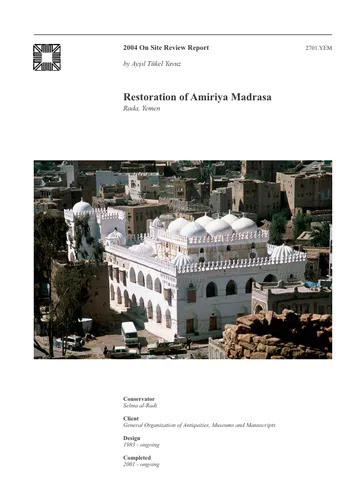
The Amiriya Madrasa was built by the last sultan of the Tahirid Dynasty at the beginning of the sixteenth century. It is quite a large madrasa, including several spaces that were probably private living spaces alongside a masjid and teaching rooms. The decoration, structure and form of the spaces are rich and varied. Extensive stucco decoration in qudad plaster and gypsum covers the walls and domes alongside tempera paintings.
The dangerous condition of the madrasa first prompted interventions to deal with the structural elements of the building, such as the walls and roof. This was mostly finished by 1987. Cleaning and restoration of the stucco decoration continues to the present day, with a team of experts form Italy restoring the paintings. The whole project is financed by contributions from the Yemeni and Dutch governments. The project started in 1982 and completion is planned for the end of 2004. The masjid will then be opened for use by the inhabitants of Rada, and the rest of the building will become a museum under the Yemeni Government Organization for Antiquities, Museums and Manuscripts (GOAMM).
I agree to the terms outlined below:
You agree to upload and assign Mosqpedia Database the rights to use the content worldwide and in perpetuity across all current and future media platforms. Mosqpedia Database may edit, copy, adapt and translate your contribution.
The content will be distributed under the Creative Commons Attribution-Deed – Attribution-NonCommercial-NoDerivatives 4.0 International – Creative Commons
All data will be stored in line with data protection regulations.